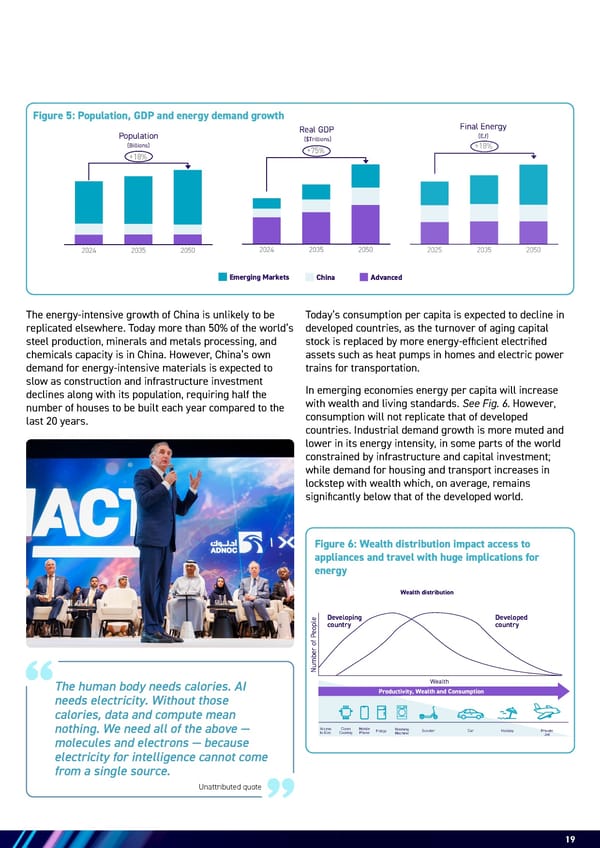Unattributed quote 19 The energy-intensive growth of China is unlikely to be replicated elsewhere. Today more than 50% of the world’s steel production, minerals and metals processing, and chemicals capacity is in China. However, China’s own demand for energy-intensive materials is expected to slow as construction and infrastructure investment declines along with its population, requiring half the number of houses to be built each year compared to the last 20 years. Figure 5: Population, GDP and energy demand growth Figure 6: Wealth distribution impact access to appliances and travel with huge implications for energy Developing country Number of People Developed country Wealth Access to Elec Clean Cooking Mobile Phone Fridge Scooter Car Holiday Washing Machine Wealth distribution Productivity, Wealth and Consumption Private Jet +18% 2024 2035 2050 Population (Billions) +75% 2024 2035 2050 +18% 2024 2035 2050 Real GDP ($Trillions) Final Energy (EJ) Emerging Markets China Advanced +18% 2025 2035 2050 Final Energy (EJ) Emerging Markets +18% 2024 2035 2050 Population (Billions) Real GDP ($Trillions) Final Energy (EJ) Emerging Markets China +18% 2024 2035 2050 Population (Billions) Real GDP ($Trillions) Final Energy (EJ) Emerging Markets China Advanced Today’s consumption per capita is expected to decline in developed countries, as the turnover of aging capital stock is replaced by more energy-efficient electrified assets such as heat pumps in homes and electric power trains for transportation. In emerging economies energy per capita will increase with wealth and living standards. See Fig. 6. However, consumption will not replicate that of developed countries. Industrial demand growth is more muted and lower in its energy intensity, in some parts of the world constrained by infrastructure and capital investment; while demand for housing and transport increases in lockstep with wealth which, on average, remains significantly below that of the developed world. The human body needs calories. AI needs electricity. Without those calories, data and compute mean nothing. We need all of the above — molecules and electrons — because electricity for intelligence cannot come from a single source.
 Energy & AI: Twin Engines Turbo-Charging Economic Growth Page 18 Page 20
Energy & AI: Twin Engines Turbo-Charging Economic Growth Page 18 Page 20